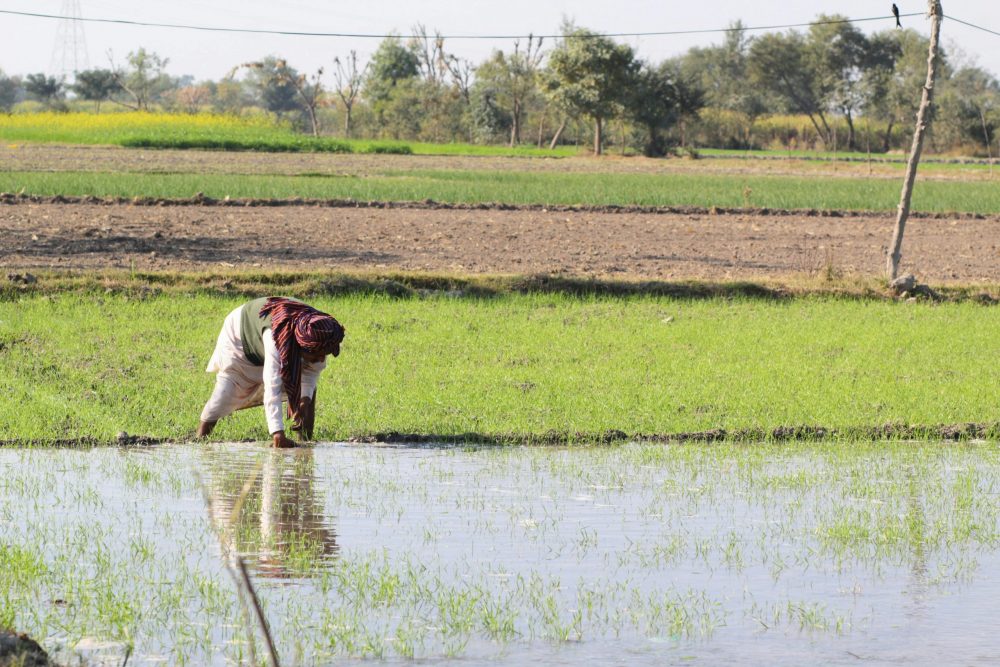Every few years, Pakistan’s monsoon rains trigger devastating floods with the country ill-prepared for them. This demonstrates that Pakistan’s disaster preparedness and climate adaptation has yet to effectively tackle the rapidly changing monsoon patterns and climate crisis unfolding in real time. Each flood exposes the harsh realities of misgovernance, inefficient urban planning and lack of climate readiness, within the country. This blog reveals how power politics, institutional unpreparedness, and poor urban planning has exacerbated Pakistan’s flood crisis.
Ravi Urban Development
The onset of monsoon rains in 2025, caused River Ravi to spill over into some of the several housing schemes that lay on the riverbed, bringing forth serious questions about how urban development is taking place in Lahore. Urban development on the river is largely managed by the Ravi Urban Development Authority (RUDA). Set up in 2020, RUDA was tasked by the government to oversee the urban development of Ravi riverfront and acquire agricultural land to develop a modern, Dubai-like megacity on the banks of the river. It aimed to provide housing for over 10 million people, increase employment, and tackle Lahore’s unrestrained and unplanned urban sprawl by directing the urban expansion onto the River Ravi. Even during its set up, RUDA faced backlash from residents of the riverbank, farmers, and environmentalists alike, who highlighted the coercive and unfair land takeover practices of the authority, as well as the ecological consequences of urban development on the river.
Despite RUDA’s claim that its sanctioned housing schemes (affecting over 78000 acres of farmland) will have a sustainable impact on the environment, there is seemingly nothing eco-friendly about them. Its overall positive environment impact assessment (EIA) report was also criticized for having serious gaps in its findings. For example, it lacked a full feasibility assessment on the project, failed to mention the economic impact of the loss of agricultural land, and did not outline any implementation measures for the ecological initiatives it suggested. Instead, there were reports of suppressive tactics being used for land acquisition, resulting in unsustainable and dangerous real estate development.
Fast forward to the Monsoon of 2025: River Ravi inundated the housing societies that bordered it, leading to catastrophic displacement, and property damages. Meanwhile, Lahore Development Authority (LDA), tehsil municipal administrations (TMAs), and RUDA traded blame and contested each other on who granted approvals to the flooded urban schemes.
Flooding in the North
Khyber Pakhtunkhwa was the worst-hit region from the 2025 floods; recording over 509 casualties and 1.6 million people affected. While the cause of destruction was majorly attributed to heavy monsoon rains causing flash floods, cloud bursts, and GLOFs, the crisis that unfolded was also rooted in manmade reasons.
Firstly, illegal encroachment on the flood plains and riverbeds for tourism and residential purposes, is common in the KP and Gilgit Baltistan region, where a crackdown on illegal sprawl was led by provincial authorities, but unfortunately, came too late. Along with the destruction of 30 illegal hotels in Swat, 50 others were also damaged, and 700 were flooded, resulting in economic losses of over Rs. 25 billion. The KP region also witnessed the destruction of 2,113 homes and the displacement of over 23,000 people.
Secondly, while many cited “cloudbursts” as the cause of the floods, it became a point of contention. To start off, cloudbursts are a sudden and heavy onset of rain that occurs when moist and warm air is forced up heated mountain slopes, causing it to cool rapidly and then burst into rainfall. With KP rapidly losing forest cover equivalent to thousands of acres each year for urban development purposes, mountain slopes are more likely to heat up due to dry and barren conditions, resulting in cloudbursts. However, the Met Office reported that the flooding in Buner, and Chakwal was wrongfully attributed to cloudbursts as the rain was spread out over a longer period of time, whereas cloudbursts must consist of over a 100mm of precipitation in an area of 30sq. Thus, resulting in a back-and-forth exchange between Provincial Disaster Management Authorities and the Met Office, and conflicting messaging to the public. This not only hindered coordination efforts due to misinformation within relief authorities, but also diverted attention away from sustainable flood relief management, onto a blame game between various stakeholders.
Power Politics
Similarly, once the floods hit, the civic outcry quickly became political, with provincial leaders and opposition parties trading blame for the governance failures in mitigating the flood crisis.
A PIDE study that observed social media discourse during the floods of 2025, showcased how political leaders manipulated the catastrophe as an opportunity to push their party narratives and positive self-image, by deflecting blame onto their political opposition, using hashtags on X (previously known as Twitter). This promoted a trust deficit, as the public was incited against their local government institutions and given conflicting alerts. On a more positive side, social media was also used as a tool to mobilize relief efforts, collect donations, spread flood awareness, and pressure governing agencies to enforce flood mitigation measures.
Ineffective Disaster Preparedness
Whether on the internet or in-person, Pakistan’s climate-readiness and capacity for predicting and managing its climate crises was still heavily scrutinised. The country operates around 85 automatic weather stations and almost a 100 meteorological observatories stations across over 700,000 sq km of land, even though the World Meteorological Organization recommends an observation point at every 100 km. Furthermore, infrastructural and environmental hazards such as clogged rivers, tributaries and canals, inefficient drainage, and a lack of surveillance and monitoring of flood-prone areas, are all key administrative limitations that exacerbate the country’s flood crisis.
After the floods hit, challenges persisted in accessing the flooded regions and moving the flood-affected to safer areas. An IGC research study on the 2022 floods that analysed a sample of 5,100 rural poor households in six different districts of Sindh, revealed that although 91% households were damaged, only 41% of the households actually evacuated; reporting limited means of evacuation, land insecurity, and lack of migration assistance. Moreover, a household’s ability to leave is also dependent on an interplay of reasons, ranging from social ties to financial concerns. These concerns require policy-level solutions, to ensure that flood-affected communities receive the proper resources to support them during their displacement.
Furthermore, preventing devastation from future floods requires Pakistan to enhance its disaster preparedness measures and invest in climate-resilient infrastructure. However, due to the IMF programme, the country operates within a tight fiscal space. Thus, Pakistan needs to globally advocate for the operationalisation of the loss and damage fund, and demand access to international climate finance to support climate initiatives such as reforestation programmes and switching to green reconstruction for a more forward-looking approach towards mitigating climate change impacts.





